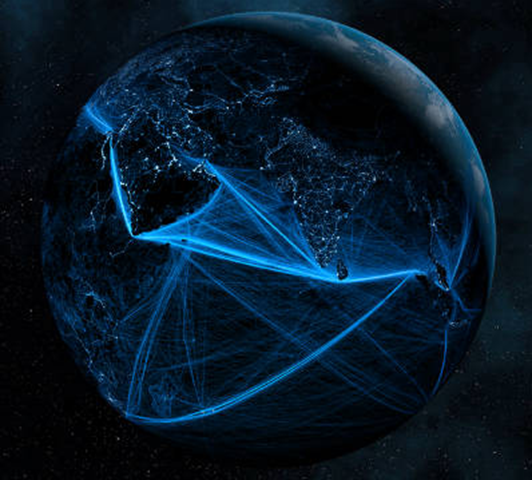Global maps show human impact on Earth
By George Webster, CNN
28 October 2011 (CNN) – On the last day of October 2011, the U.N. says the world population will hit seven billion people – an increase of one billion since 1999. To show some of the impacts of this vast human upheaval, Canadian anthropologist Felix Pharand has created a series of visualizations mapping the presence of technology onto a selection of satellite images showing the Earth from space. Using data from a range of sources, including the National Geospatial-Intelligence Agency and the World Meteorological Organization, the images depict a sprawl of air traffic routes, the underwater cables that carry the internet, road and rail networks, pipelines, shipping lanes and electricity transmission lines. “These images are illustrations of how far we have come at transforming our home planet,” said Pharand, who is founder-director of Globaia — an environmental education organization based in Quebec. “It shows a human-dominated planet where wilderness areas are shrinking and where the habitats of other species are decreasing in size,” he added. According to the U.N. Population Fund, it took the whole of human history until the early 19th century to reach a population of one billion people, and it was not until 1927 that the figure doubled to two billion. Now, the U.N. calculates that the global population will reach nine billion by 2050 and, by the end of the century, it says there could be up to 16 billion people on the planet. “We humans have become a major force of operation on the biosphere. My goal is to foster global awareness of these issues by changing people’s worldviews,” said Pharand. “The strength of these images is, I think, the fact that they are wordless and global, and their overall meaning can be grasped instantly by almost anyone without having to describe them with labels and legend.”
